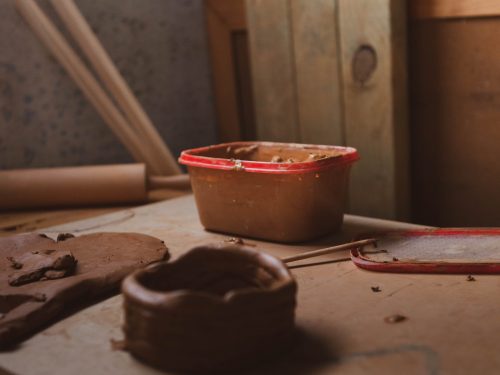

HAND BUILDING WITH CLAY
Hand buildings described as building with clay directly from your hands, without the assistance of a wheel. Following are some foundational skills to hand building that can and have resulted in large masterpieces.
- Before you start hand building your masterpieces, quickly sketch out what shape you want your vessel to take, this will help guide you in selecting what techniques you will use, and assist in where to start and be resourceful to reflect back on.
PINCH POT
PINCH POT
If you haven’t built with clay before this is a great technique to start with.
Pinch pots are fast to build and a versatile shape, you can make mugs, bells, bowls, flower pots ect.
The beauty to the organic shape of a pinch pot is that it is a blank canvas allowing you to explore different designs techniques. This is where having a sketch comes in handy, assisting you to allow for any design or added structures, eg patterns or handles

SLAB WORK
SLAB WORK
There is a bit more involved in making slabs, and without a slab roller it can be a bit tedious. However this is my preferred technique in hand building.
I enjoy watching how fast the vessels take shape and its amazing what you can hold from a sheet of clay.
For a slab, you will need.
- Rolling pin or heavy glass bottle
- Two sticks, same in length and width
- A mat or board to make easy to lift
Make sure you rotate the clay when you’re rolling it, its important so that when you join your pieces together the clay molecules grip together.

COIL POTS
COIL POTS
If you liked making worms and snails from play dough as a kid, this technique is for you!
I suggest you make up a batch of coils, because once you get constructing you won’t want to stop.
The base of a coil pot can be made from a slab or coils by using the snail method you likely would have made from play dough, followed by adding coils one after another to build up the structure of your vessel.
- Make sure all your coils are approx the same width
- Apply the cross hatching technique and slurry in-between coils
- Keep unused coils covered as they will dry quickly



